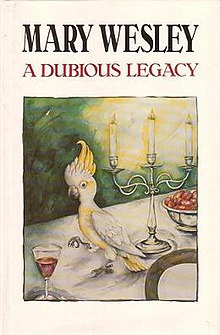
Lady Arbella Stuart was an English noblewoman who was considered a possible successor to Queen Elizabeth I of England. During the reign of King James VI and I, she married William Seymour, 2nd Duke of Somerset, another claimant to the English throne, in secret. King James imprisoned William Seymour and placed her under house arrest. When she and her husband tried to escape England, she was captured and imprisoned in the Tower of London, where she died at age 39.

Mary Aline Siepmann CBE, known by the pen name Mary Wesley, was an English novelist. During her career, she was one of Britain's most successful novelists, selling three million copies of her books, including ten bestsellers in the last twenty years of her life.
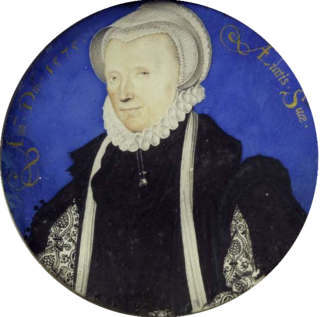
Margaret Douglas, Countess of Lennox, was the daughter of the Scottish queen dowager Margaret Tudor and her second husband Archibald Douglas, 6th Earl of Angus, and thus the granddaughter of King Henry VII of England and the half-sister of King James V. She was the grandmother of King James VI and I.

Princess Louise Margaret of Prussia, later Duchess of Connaught and Strathearn, was a member of the House of Hohenzollern who married into the British royal family. She served as the viceregal consort of Canada while her husband, Prince Arthur, Duke of Connaught and Strathearn, served as the governor general, from 1911 to 1916.
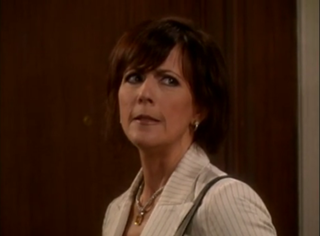
Barbara Ryan is a fictional character from the American CBS soap opera As the World Turns. In the early 1970s, Barbara was played by a succession of actresses, but the actress most associated with the role is Colleen Zenk, who played her since September 1, 1978. She is portrayed as a heroine who experienced many tragedies, mostly at the hands of her controlling ex-husband, the villainous James Stenbeck. Barbara is the daughter of Jennifer Sullivan.
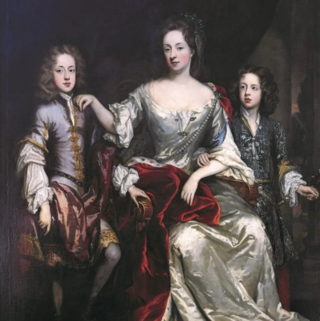
Anne Scott, 1st Duchess of Buccleuch was a wealthy Scottish peeress. After her father died when she was a few months old, and her sisters by the time she was 10, she inherited the family's titles. She was married to James Scott, 1st Duke of Monmouth, and the couple had six children, only two of whom survived past infancy.

Too Many Husbands is a 1940 American romantic comedy film about a woman who loses her husband in a boating accident and remarries, only to have her first spouse reappear—yet another variation on the 1864 poem Enoch Arden by Alfred, Lord Tennyson. The film stars Jean Arthur, Fred MacMurray and Melvyn Douglas, and is based on the 1919 play Home and Beauty by W. Somerset Maugham, which was retitled Too Many Husbands when it came to New York. The film was directed by Wesley Ruggles.
Margaret Shelton was the sister of Mary Shelton, and was once thought to be a mistress of Henry VIII of England.
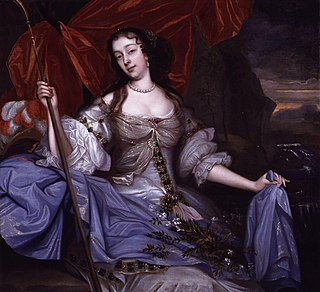
Charlotte Lee, Lady Baltimore (23 March 1678, – 1 February 1721,, was an English noblewoman, and granddaughter of King Charles II of England and his mistress Barbara Villiers. She married in 1699, Benedict Leonard Calvert, 4th Baron Baltimore, from whom she separated in 1705; she later married Christopher Crowe. She was the mother of Charles Calvert, 5th Baron Baltimore, and of Benedict Leonard Calvert, who was Governor of Maryland from 1727 to 1731.

Jean Gordon, Countess of Bothwell was a wealthy Scottish noblewoman and the second wife of James Hepburn, 4th Earl of Bothwell. He became, after his divorce from Lady Jean, the third husband of Mary, Queen of Scots. Lady Jean herself had a total of three husbands. Upon her second marriage, she became the Countess of Sutherland.
Janet Beaton, Lady of Branxholme and Buccleugh (1519–1569) was an aristocratic Scottish woman and a mistress of James Hepburn, Earl of Bothwell. She had a total of five husbands. One of her nieces was Mary Beaton, one of the four ladies-in-waiting of Mary, Queen of Scots, known in history as the four Marys. In her lifetime, she was accused of having been a witch. Janet was immortalised as Sir Walter Scott's Wizard Lady of Branxholm in his celebrated narrative poem "Lay of the Last Minstrel".
Anne Hamilton, Countess of Huntly, was a Scottish noblewoman and a member of the powerful Hamilton family which had a strong claim to the Scottish crown. Her father James Hamilton, Duke of Châtellerault, 2nd Earl of Arran was heir presumptive to the throne of Scotland after Mary, Queen of Scots prior to the birth of the latter's son Prince James in 1566. Anne was the wife of George Gordon, 5th Earl of Huntly, Lord Chancellor of Scotland and a chief conspirator during the reign of Queen Mary.
Mary Stewart, Countess of Arran was the elder daughter of King James II of Scotland and Mary of Guelders. King James III of Scotland was her eldest brother. She married twice: firstly, to Thomas Boyd, 1st Earl of Arran; secondly, to James Hamilton, 1st Lord Hamilton. It was through her children by her second husband that the Hamilton earls of Arran and the Stewart earls of Lennox derived their claim to the Kingdom of Scotland.

Agnes Leslie, Countess of Morton was a Scottish noblewoman, being the daughter of George Leslie, 4th Earl of Rothes. She was the wife of William Douglas, 6th Earl of Morton, who as Laird of Lochleven Castle was the custodian of Mary, Queen of Scots during her captivity from June 1567 until her escape on 2 May 1568. Agnes was Queen Mary's chief female companion throughout her imprisonment; thus it was while Lady Agnes was recovering from childbirth that the queen successfully escaped from Lochleven.

Agnes Douglas, Countess of Argyll was a Scottish noblewoman and the first wife of Archibald Campbell, 7th Earl of Argyll. She was the mother of three of his children, including his heir, Archibald Campbell, 1st Marquess of Argyll, the de facto head of the government in Scotland throughout most of the conflict known as the Wars of the Three Kingdoms. Lady Agnes was considered so beautiful that she was described as a "pearl of Lochleven."

Not That Sort of Girl (1987) is a novel by British author Mary Wesley. The novel is set in Southern England and takes its beginning in the late 1930s and follows the life of Rose Peel throughout 48 years of marriage.

Second Fiddle (1988) is a best-selling novel by British author Mary Wesley.
Margaret Knox was a Scottish noblewoman and the second wife of Scottish reformer John Knox, whom she married when she was 17 years old and he 54. The marriage caused consternation from Mary, Queen of Scots, as the couple had married without having obtained royal consent.
Lady Catherine Gordon was a Scottish noblewoman and the wife of Yorkist pretender Perkin Warbeck, who claimed he was Richard of Shrewsbury, Duke of York. After her imprisonment by King Henry VII of England, she became a favoured lady-in-waiting of his wife, Elizabeth of York. She had a total of four husbands, but there are no records of any surviving children.
As the World Turns is a long-running soap opera television series that aired on CBS from April 2, 1956, to September 17, 2010. Its fictional world has a long and involved history.
